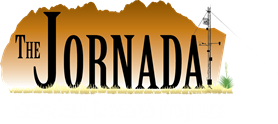| Title | Real-time LoRaWAN precision ranching technologies: What we've learned |
| Publication Type | Conference Proceedings |
| Year of Publication | 2022 |
| Authors | Nyamuryekung'e S., Cibils AF, Utsumi S.A, Estell RE, Cox A, Duni D, Gouvea V., Brandani C, Duff G., Gong Q, Waterhouse T, Holland JP, Cao H, Boucheron LE, Chen H., Spiegal S. |
| Conference Name | 2022 Society for Range Management Annual Meeting |
| Date Published | 2/8/2022 |
| ARIS Log Number | 392977 |
| Keywords | LoRaWAN, precision ranching, Real-time, technologies |
| Abstract | We tested a precision livestock farming (PLF) system deployed across 4000-ha of Chihuahuan Desert Rangeland (trial 1; T1) and 130-ha of wheat pasture (trial 2; T2) over three (March-May 2020) and one month (October 2020), respectively. The PLF system included a LoRa WAN Kerlink® iStation gateway, deployed either using solar power and WiFi Backhaul communication or off-grid power and Ethernet connection. Tested sensors were Abeeway® Industrial trackers (IT) and Decentlab® sensors to monitor precipitation and water level in a cattle drinking trough. In T1, the battery power of IT deployed on beef cattle (n = 43) dropped from 100 to ~35% over the three-month trial and GPS data packets programmed to be recorded at 15-min intervals were recovered at ~0.08 – 1.3-hour intervals yielding between 46 to 80% of expected GPS fixes. Variation in GPS data acquisition was associated with distance to the gateway base station and oscillations in solar power and backhaul WiFi signal. In T2, stationary IT deployed either indoors (n = 5) or outdoors (n = 6) were programmed to collect GPS locations and acceleration data at 1-min and 15-min intervals, respectively. More frequent and reliable GPS data packet acquisition was recorded with IT deployed outdoors (in T2; bias = 5.20 m) compared to IT deployed indoors (in T2; bias = 17.76 m) and those deployed in T1. Except for a few cases of background noise, accelerometer data were almost non-existent due to the static deployment of IT in T2 (powersaving function). Results from our case studies suggest the feasibility of mounting a fully operational LoRaWAN system for PLF on extensive rangelands. Our studies also identified areas for improvement of LoRa WAN infrastructure and data communication, analysis and visualization to further enhance uses of real-time biosensing of animals and monitoring of ranching infrastructure in commercial PLF applications. |


